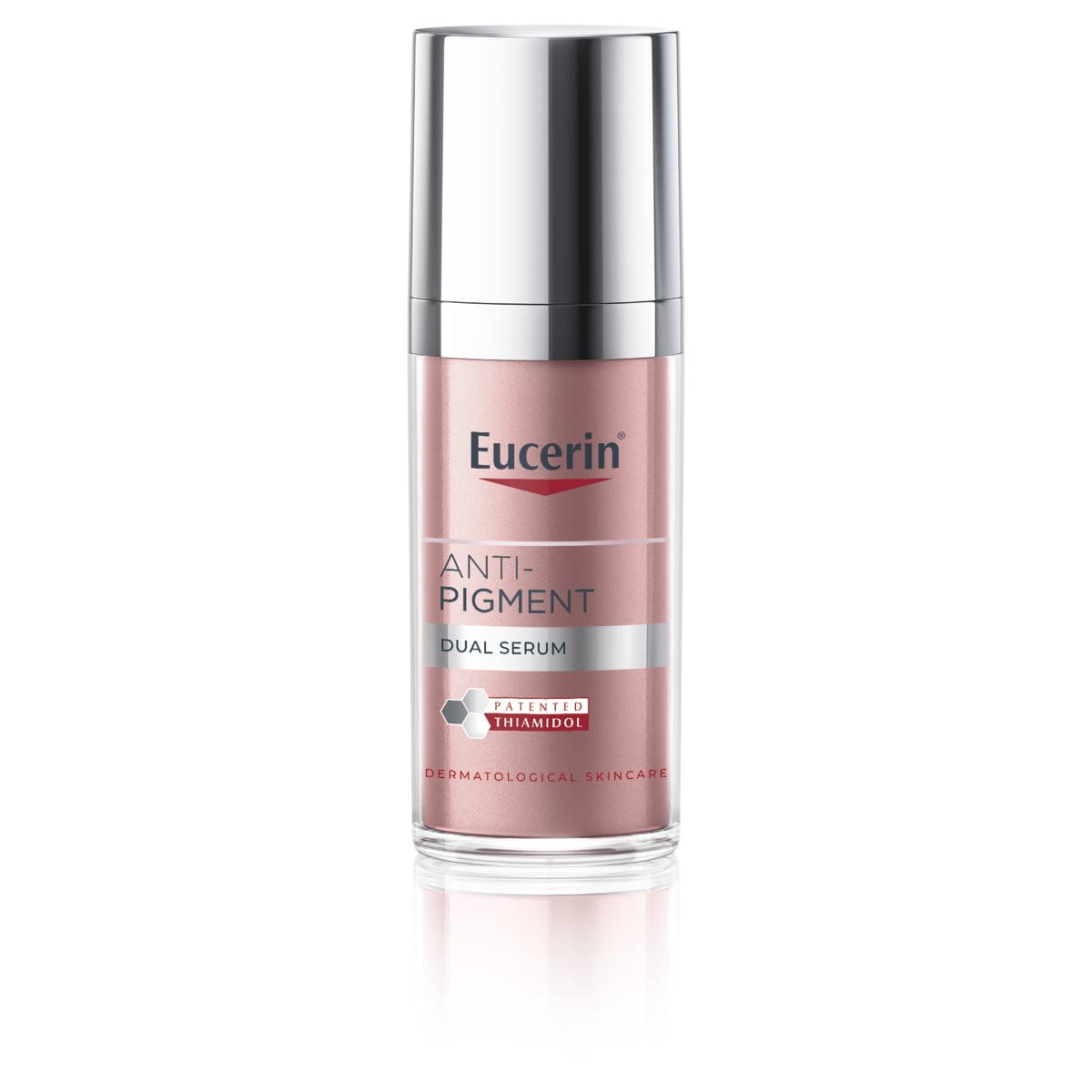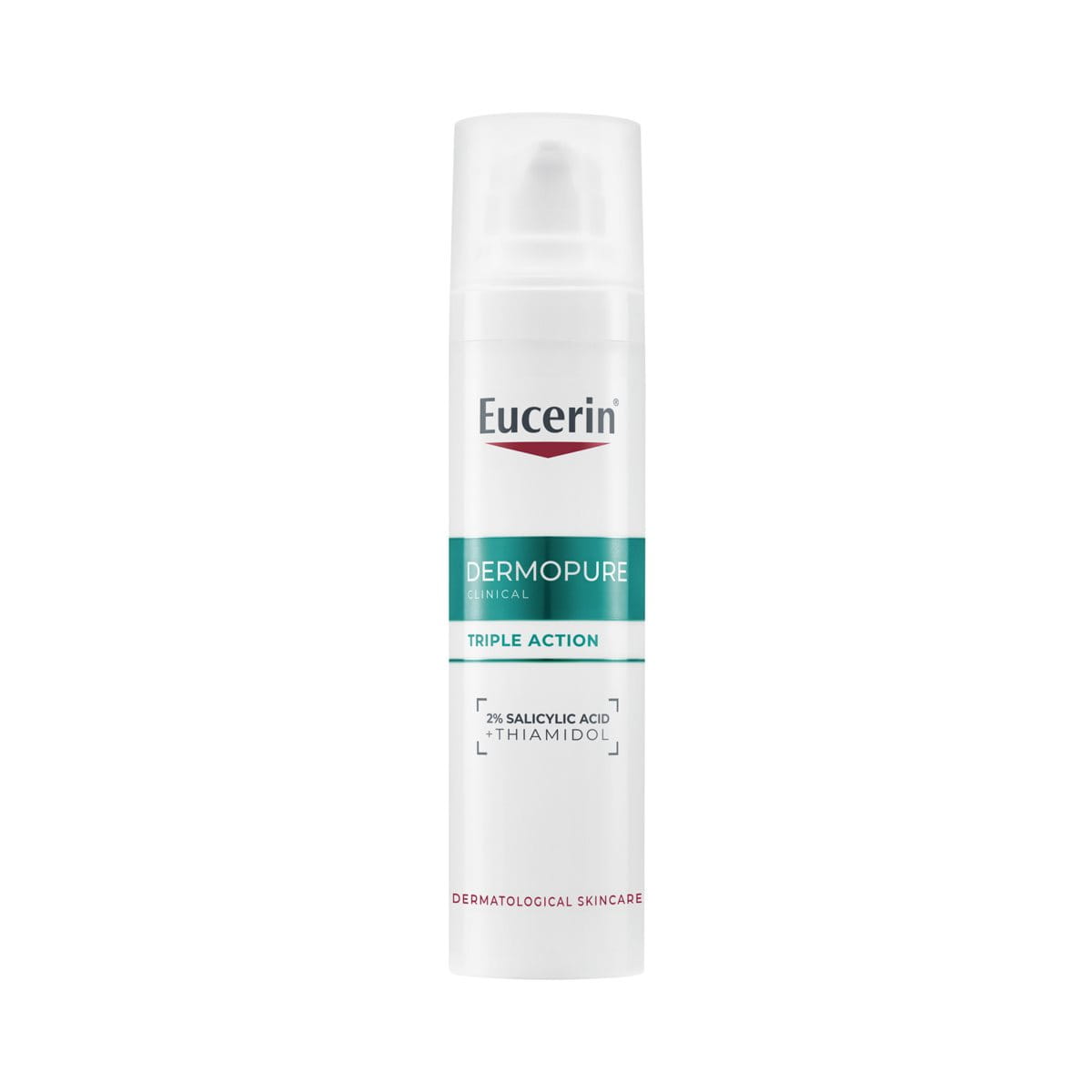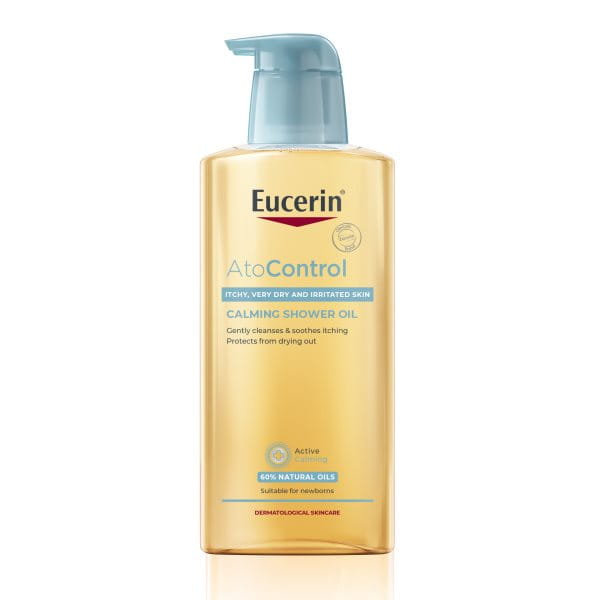Atopic dermatitis is the most common skin disease in children, affecting approximately 15% to 20% of children1,2,3,4. Childhood eczema symptoms − dry, red, itchy and irritated skin − can be extremely uncomfortable , causing considerable distress for parents and carers too.
While there is no cure for atopic dermatitis, this article looks at how the condition affects children and their families. Explore the symptoms, causes and triggers and learn how to treat eczema in children and avoid flare-ups.
Symptoms of eczema in children
Children can develop atopic dermatitis at any stage. Atopic eczema in babies is common, usually affecting the forehead, cheeks, or scalp. Most sufferers get the disease before they are five5.
Between the ages of two and puberty, atopic dermatitis normally appears as patches of dry, red and itchy skin on the neck, creases of the elbows and knees, wrists, ankles, hands, and between the buttocks and the legs. Symptoms often persist for more than three months (the medical definition of a chronic disease) and skin in the inflamed areas can thicken and take on a leathery texture.
For older children and teenagers, eczema rashes tend to appear in the elbow creases, behind the knees, on the neck, wrists and ankles. Sometimes, child eczema only develops on the hands. Due to scratching, skin can be thicker, darker or scarred than when the condition first started.
Two phases of atopic dermatitis
Atopic dermatitis has two distinct phases:
- The acute phase when a child's skin flares-up and is at its most irritable. Read more about this phase in Atopic eczema flare-up.
- The non-acute phase between flare-ups where skin looks and feels calmer. You can read more about this phase in Understanding atopic dermatitis
The acute phase is the most distressing. Your child may be in considerable discomfort, the itching can become so intense that they can’t sleep and the disease can have a considerable impact on their quality of life6. The disease can also cause significant stress for parents and caregivers who can feel hopeless, guilty and depressed.
While most children grow out of atopic dermatitis by the time they reach puberty, an estimated 10% of patients continue to suffer from atopic eczema as adults. Research indicates that those who have atopic dermatitis as children can go on to develop other, related conditions like asthma and allergic rhinitis8.
When to see a doctor
If your child’s skin is bothering them, and you are in any way concerned about their symptoms, consult your doctor. As part of the diagnosis, they will ask when the symptoms started and how they're impacting your child's everyday life.
Children and teenagers with atopic eczema are prone to skin infections, and bacteria can make dermatitis rashes worse. Always seek medical advice if you notice a sudden change or increased severity of eczema, and if you notice the following signs of infection:
- Pus-filled bumps
- Oozing
- Crusting
- Blisters
- A fever
- Worsening rash that doesn't respond to treatment
What causes eczema in children?


Atopic dermatitis is linked to a compromised skin barrier function and an immune disorder. Dermatologists have identified several causes of eczema in children.
Genetic disposition
There are two major risk factors for the development of atopic dermatitis: 1) a genetic defect in the Filaggrin (FLG) gene2,9 and 2) a family history of atopic disease2,10.
Children can inherit a Filaggrin deficiency from affected parents11. If a parent suffers from atopic dermatitis then the child has a 40% chance of inheriting it. If both parents are affected, that chance of childhood eczema rises to between 60% and 80%12.
There is also a proven link between atopic dermatitis and allergies. A family history of hay fever and/or asthma increases the likelihood of a baby experiencing atopic dermatitis.
Sufferers are also known to have an irregular immune function (known as atopy), which makes their skin more reactive to the environment and susceptible to inflammation.
Climate/pollution
Being born in a developed country, a cold climate or a polluted city seems to increase the risk of atopic dermatitis. Weather conditions may also trigger symptoms13.
Sensitivity to allergens
A compromised barrier function makes it easier for potential allergens such pollen, house dust and pet hair to irritate skin. The role that food allergies play in atopic dermatitis is controversial2 but some people find that certain foods can make their child’s skin more sensitive and more prone to an eczema flare-up.
Other external aggressors
Abrasive fabrics, harsh cleansers and the chemicals used in biological washing powders can all aggravate delicate young skin. Research has proven that passive smoking is especially harmful for young lungs14.
Scratching
The symptoms of child eczema can also trigger and/or exacerbate a flare-up, because children scratch when their skin is dry and itchy. This scratching damages skin’s protective barrier and a bacteria known as staphylococcus aureus is able to multiply and infect skin. This infection causes inflammation and itching which worsens the condition making skin even more irritable and itchy. Learn more about this vicious circle known as the Atopic Skin Cycle in Understanding atopic dermatitis.
Child eczema treatment
While there may be no cure for childhood eczema, the good news is that effective medical treatment and good skincare can alleviate much of the discomfort.
Children’s skin is thinner and has less pigmentation than adult skin. Read more about the structure of young skin in Baby and children’s skin. Eczema in children can be treated with gentle phase-specific care:
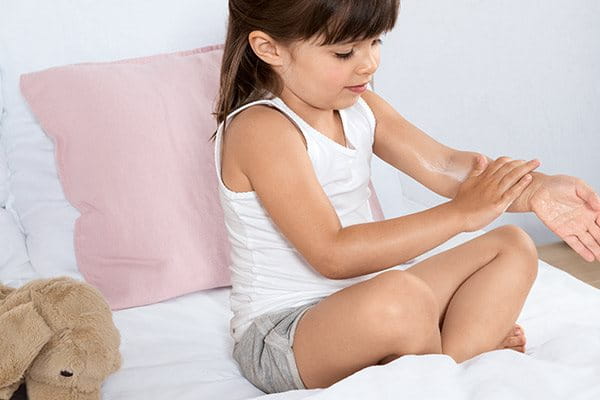
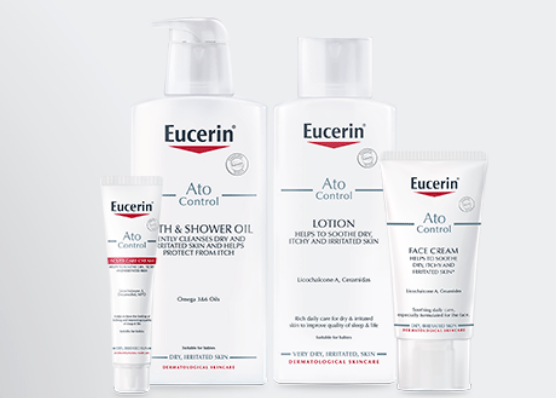
- During the non-acute phase, it needs daily moisturisation to ease dryness and prolong the period between flare-ups
- During the acute, flare-up phase it needs medical and non-medical products to soothe and calm symptoms in addition to the usual daily moisturisation.
The right moisturising products, and a regular and careful routine, play a key role in protecting and soothing your child’s atopic skin. Avoid fragranced-products, opting for mild, unscented lotions and soaps instead.
Eucerin AtoControl Acute Care Cream can be used as a children’s eczema cream. This has been specially formulated to offer relief and care for an eczema flare-up. Also in the range, the AtoControl Bath & Shower Oil protects skin’s barrier from further dryness and itching.
Once your child is old enough, you should teach them useful skincare habits so they can help prevent eczema flare-ups. Even young children can be taught not to scratch.
How to prevent childhood eczema flare-ups
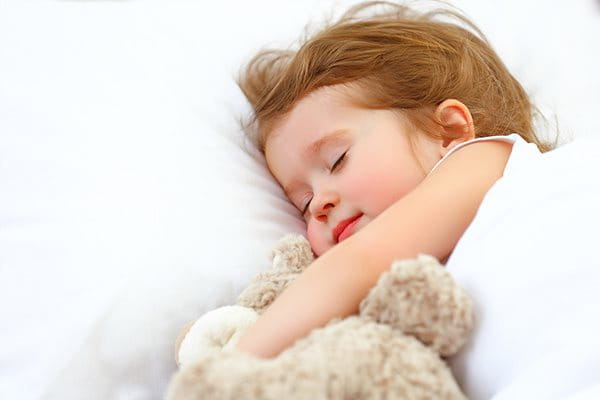

Try keeping a record of when your child’s skin flares-up and discuss it with your doctor. This will help to identify possible triggers and determine the best treatment. Everyone is different, but here are some of the things you can do to help reduce the impact of potential triggers:
Don’t smoke near your child
Passive smoking can worsen childhood eczema symptoms.
Choose gentle, skin-friendly fabrics
Cotton and linen are less abrasive than synthetic fabrics. Avoid scratchy wool. Wash new clothes to remove any chemicals that may have been part of the manufacturing process.
Allergies
If you think that food is triggering your child’s symptoms, or making their atopic dermatitis worse, consult your doctor before trying to eliminate any of those possible triggers. It’s important your child gets the nutrients they need to grow and develop. It's important to identify what allergies may be triggering child eczema. Pollen, dust and pet hair are potential culprits.
Bathe them in warm, not hot, water
Children should bathe in lukewarm baths or showers and use mild, fragrance-free products like the Eucerin AtoControl Bath & Shower Oil. Gently pat dry your child's skin after bathing. Consider using oatmeal or salt in the bath water to help soothe atopic skin.
Reduce the potential damage that scratching can cause
Scratching can also lead to skin becoming infected, so keep your child’s nails trimmed. Wearing cotton gloves (also known as scratch mitts), can also help to prevent skin damage.
Ensure your child is hydrated
Creams and products will help, but it's important to keep their body hydrated by drinking 6-8 glasses of water each day.
Don't let them overheat
As well as avoiding very hot water, keep your child cool - especially when sleeping. Hot, sweaty skin can cause eczema flare-ups.
Avoid hand sanitisers
Hand sanitisers are very popular, but these antibacterial cleansers can be damaging to atopic skin. Wash your child's hands with warm water instead, and moisturise once you've pat dried them.
Our brand values

We deliver a holistic dermo-cosmetic approach to protect your skin, keep it healthy and radiant.

For over 100 years, we have dedicated ourselves to researching and innovating in the field of skin science. We believe in creating active ingredients and soothing formulas with high tolerability that work to help you live your life better each day.

We work together with leading dermatologist and pharmacist partners around the world to create innovative and effective skincare products they can trust and recommend.
